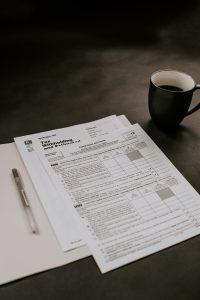Forex trading is an exciting and dynamic market that involves buying and selling different currencies. As a forex trader, one must be familiar with various trading concepts such as standard deviation, which plays a crucial role in determining the risk and return of a trade. In this article, we will discuss the changing standard deviation when placing a forex trade.
Standard deviation is a statistical measure that represents the amount of variability or dispersion of a set of data from its mean value. In forex trading, standard deviation is used to measure the volatility or risk associated with a particular currency pair. A high standard deviation indicates that the price of the currency pair is more volatile, while a low standard deviation suggests that the price is less volatile.
When placing a forex trade, the standard deviation of the currency pair is an important factor to consider. Traders use standard deviation as an indicator of risk because it helps them estimate the potential losses they may incur if the market moves against their position. Therefore, the higher the standard deviation, the greater the risk associated with the trade.
The standard deviation of a forex trade is not constant and can change over time due to various factors such as economic news, geopolitical events, and market sentiment. For instance, if a country’s central bank announces a change in its interest rates, it can significantly impact the standard deviation of the currency of that country. Similarly, if there is political unrest or a natural disaster, it can cause a sudden increase in volatility, leading to a higher standard deviation.
Furthermore, the standard deviation of a currency pair can also change depending on the time of day, week, or month. Forex traders often observe higher volatility during the opening and closing hours of the trading day, leading to a higher standard deviation. Similarly, the standard deviation can increase during the release of economic data, such as GDP, inflation, and employment reports.
To manage the risk associated with changing standard deviation, forex traders use various risk management techniques such as stop-loss orders, limit orders, and position sizing. Stop-loss orders are used to limit the trader’s losses if the market moves against their position. A limit order is used to exit a trade at a predetermined profit target. Position sizing refers to the amount of capital allocated to a trade, which is determined based on the trader’s risk tolerance and the standard deviation of the currency pair.
In conclusion, changing standard deviation is an important factor to consider when placing a forex trade. Traders must be aware of the factors that can influence the standard deviation, such as economic news, geopolitical events, and market sentiment. By using risk management techniques such as stop-loss orders, limit orders, and position sizing, traders can manage the risk associated with changing standard deviation and improve their chances of success in the forex market.






